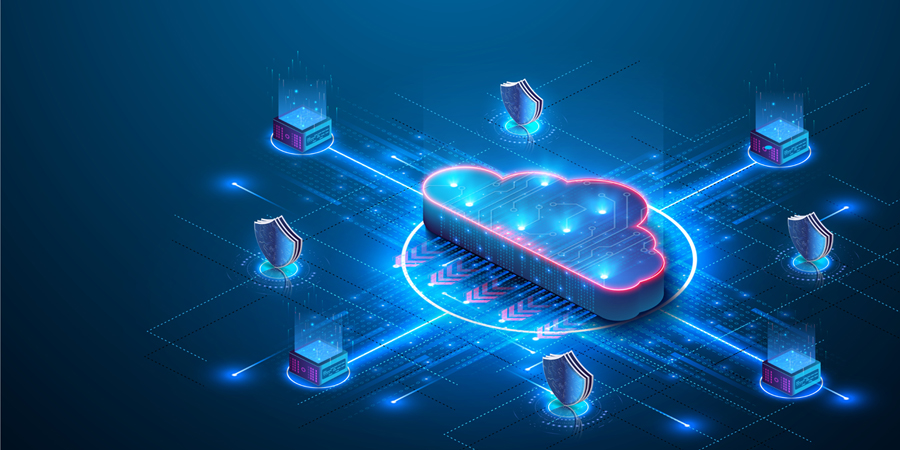The global pandemic changed the way companies execute their IT and application strategies. Accordingly, the migration of core IT to the cloud has accelerated. This results in huge demand for cloud-based services, making the cloud the champion among these unlikely times.
Cloud has proven to be the underlying robust technology that is crucial to every business plan; an integral part that enables artificial intelligence (AI), machine learning (ML), edge, and 5G. Cloud adoption means organizations are migrating from traditional on-prem data centers to dynamic infrastructure across public clouds. However, dynamic infrastructure requires IT teams to still manually provision and manage servers, operating systems, database connections, and storage. Hence, infrastructure automation comes into place.
By definition, cloud infrastructure automation enables the development, deployment, and scalability of cloud security, cloud data management, and infrastructure management, among other applications. These processes are done with reduced time, expenses, and risks.
Even though the cloud plays a prominent role in easing the organizational burden, it is not enough to do the work. Automation has become key in many critical cloud operations such as provisioning and configuring resources; establishing clusters and load balancing; as well as monitoring and managing performance.
Now is the perfect time to automate cloud infrastructure and realize full cloud potential as not only telcos are embracing digital transformation and cloud services. Bear in mind that cloud infrastructure encompasses the tools needed to build a cloud architecture.
Serving as a blueprint, cloud architecture is how technologies are integrated to create cloud computing environments. It’s the way all the components that make up clouds are connected. These include hardware, virtual resources, networks, operating systems, middleware, automation, management, and containers.
Strategic business move
When we think of a telecom company, heavy infrastructure of cell towers, transmitters, data centers, cables, and wires come to mind. But now, telcos are deciding to transform from traditional to virtualized, into cloudified and cloud-native infrastructures. This trend is going at a fast pace and is expected to evolve into 2022 and beyond.For CSPs, this shift opens up better opportunities on their three most valuable assets: customer experience, wireless spectrum, and service reliability. Without a doubt, a cloud-based network makes upgrades faster and allows a carrier to instantly add capacity and provision services, both locally and internationally.
Embodying a smart edge, telcos are now working in a high-bandwidth, low-latency environment covering 5G, making it possible to instantly analyze problems and deploy solutions quickly. The significant changes brought by cloud technology, data analytics, open-source software, and software-defined networking to telecom would have an outsized effect on the rest of the economy and boost new innovations that promise a brighter future for everyone.
Getting rid of physical network functions to immerse into a cloud-native environment, system-verified, optimized, and open-source solutions are key to supporting service providers’ cloud infrastructure transformation. The system should be able to handle telco workloads with high performance and throughput. Supporting cloud-native applications in both a virtualized and bare metal infrastructure environment is also essential for fast 5G core deployment.
It is important to see the cloud’s massive capability as a business continuity technology. It is not only a digital transformation engine. Thus, with cloud infrastructure automation, a business can have advanced cyber resources and solutions; seamless database modernization; multi-cloud to escape vendor lock-in; scalable apps that can expand efficiently; and faster time to market with an agile approach and cloud DevOps.
From a general perspective, the telecom industry is anticipated to become more agile than before. With a cloud infrastructure automation framework, the IT team can meet their service level agreements (SLAs) with less complexity and more resources focused on business value. These factors contribute to increased uptime and the deployment of new workloads.
Components of cloud infrastructure
The basic components of any cloud infrastructure are the same — whether it's on private cloud, public cloud, or a hybrid model.Hardware. Typically, cloud infrastructure is located off-premise and conveniently accessed online. Along with this, the hardware resources are virtualized and abstracted, to allow for resource scaling, sharing, and provisioning. For business success, it is crucial to match the needs for server configuration. Features, scalability, and pricing are considered for this. Other hardware components like processing units, power supply, and memory also affect the performance and cost-effectiveness of the cloud infrastructure.
End users don’t control, manage, and operate hardware at the physical layer but they have to do it within underlying layers of abstraction and software-defined infrastructure. Hardware redundancy and flexibility are built into the systems to ensure that the cloud infrastructure performance, security, and availability issues can be handled without causing a major impact.
Virtualization. With cloud virtualization, customers can utilize the service or resources they need, without considering the physical infrastructure itself. Virtualization in cloud computing allows a provider to virtualize servers, storage, or other physical hardware or data center resources, allowing more security, flexibility in operations and data transfer, and reduced costs and electricity.
Cloud virtualization enables workload management to be more efficient, economic, and scalable as well as help in the sharing of applications across a network thread of several enterprises and active users.
Storage. Cloud storage is a method for storing, retrieving, and sharing data that’s simple, reliable, and scalable for executives, employees, and entrepreneurs, among others. No need to buy their own banks of hard drives or servers — simply pay for cloud drives when needed. Cloud storage vendors typically have a pay-as-you-go model for either object, file, or block storage.
Storing data in the cloud lets IT departments transform their total cost of ownership, time to deployment, and information management. This type of storage can be used for backup and recovery, software test and development, cloud data migration, and compliance. This is the preferred means for organizations to extend their infrastructure or develop new technologies.
Network. Cloud networking provides connectivity to and between, applications and workloads. It is vital to the performance, security, and efficient management of hybrid and multi-cloud environments — becoming the new enterprise core. This requires collaboration across IT operations involving DevOps application teams, cloud architects, and business stakeholders.
Cloud networking acts as a gatekeeper to applications, utilizing the cloud for connectivity between network resources. Known to be flexible, simple, and resilient networks, cloud network providers can offer between cloud-based networking (interconnecting virtual machines) or cloud-enabled networking (remote network infrastructure with cloud management).


































